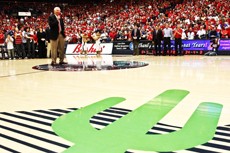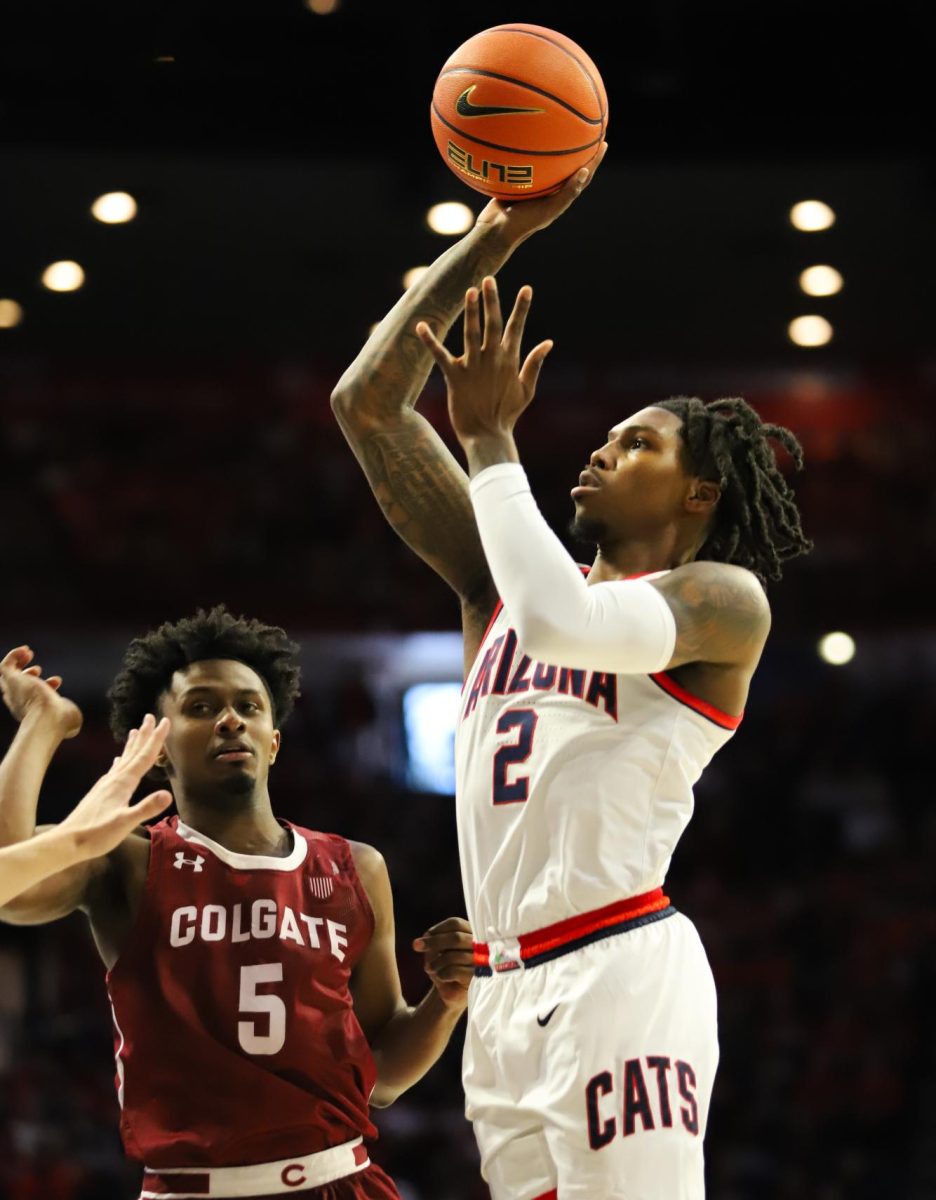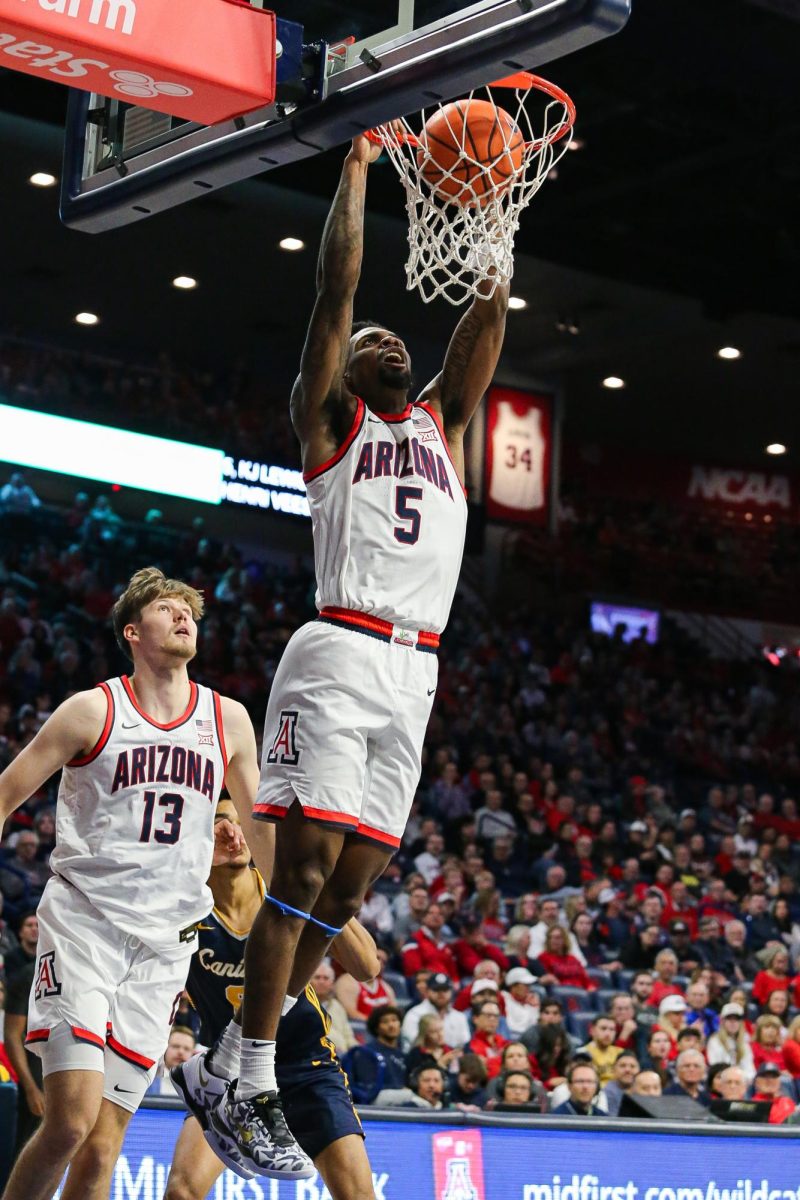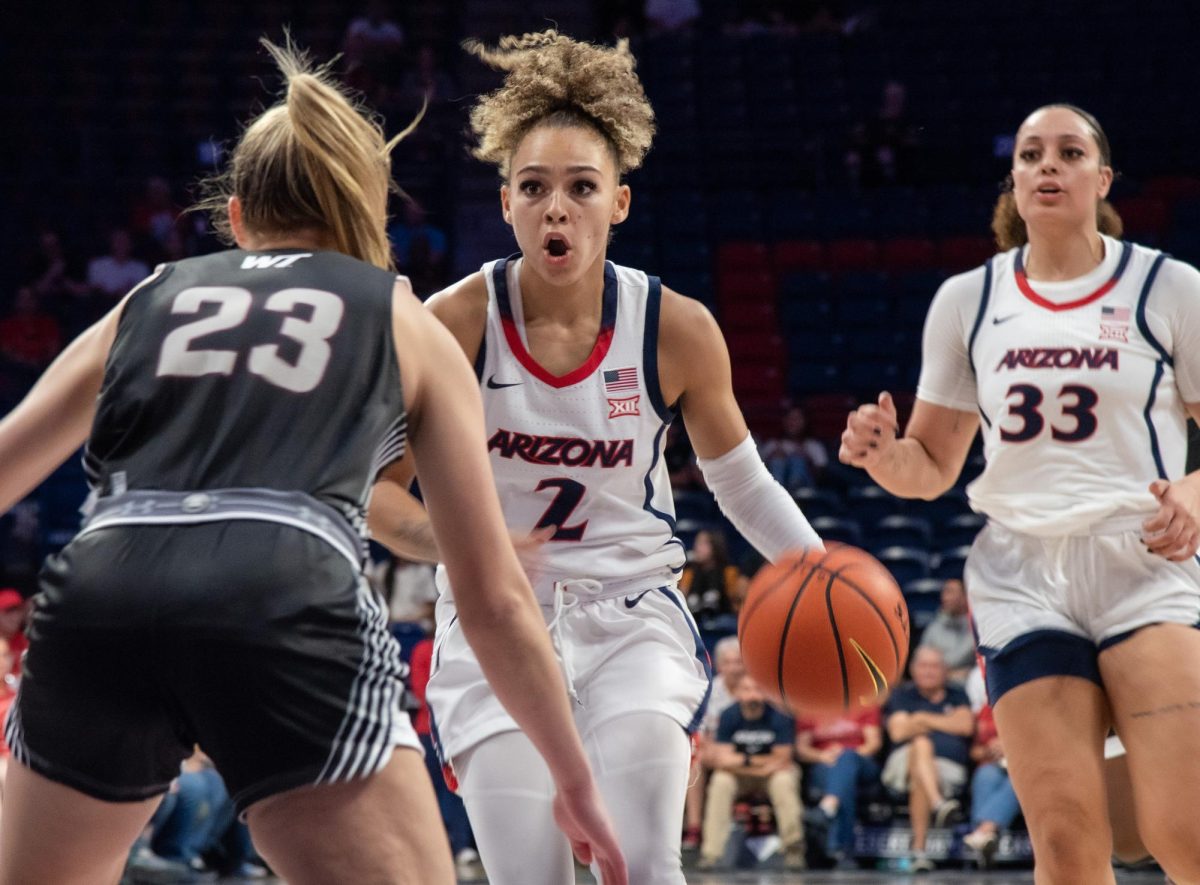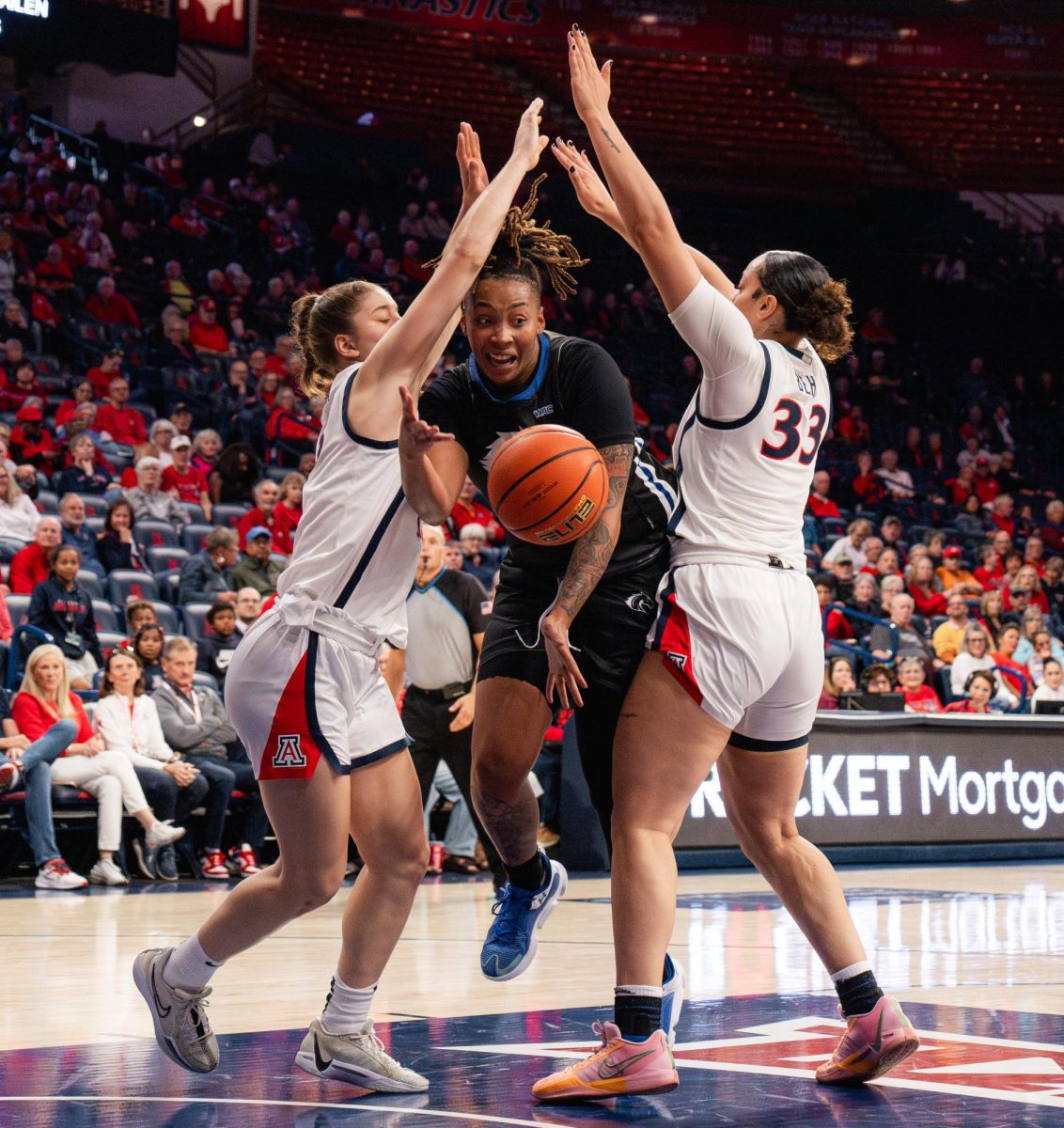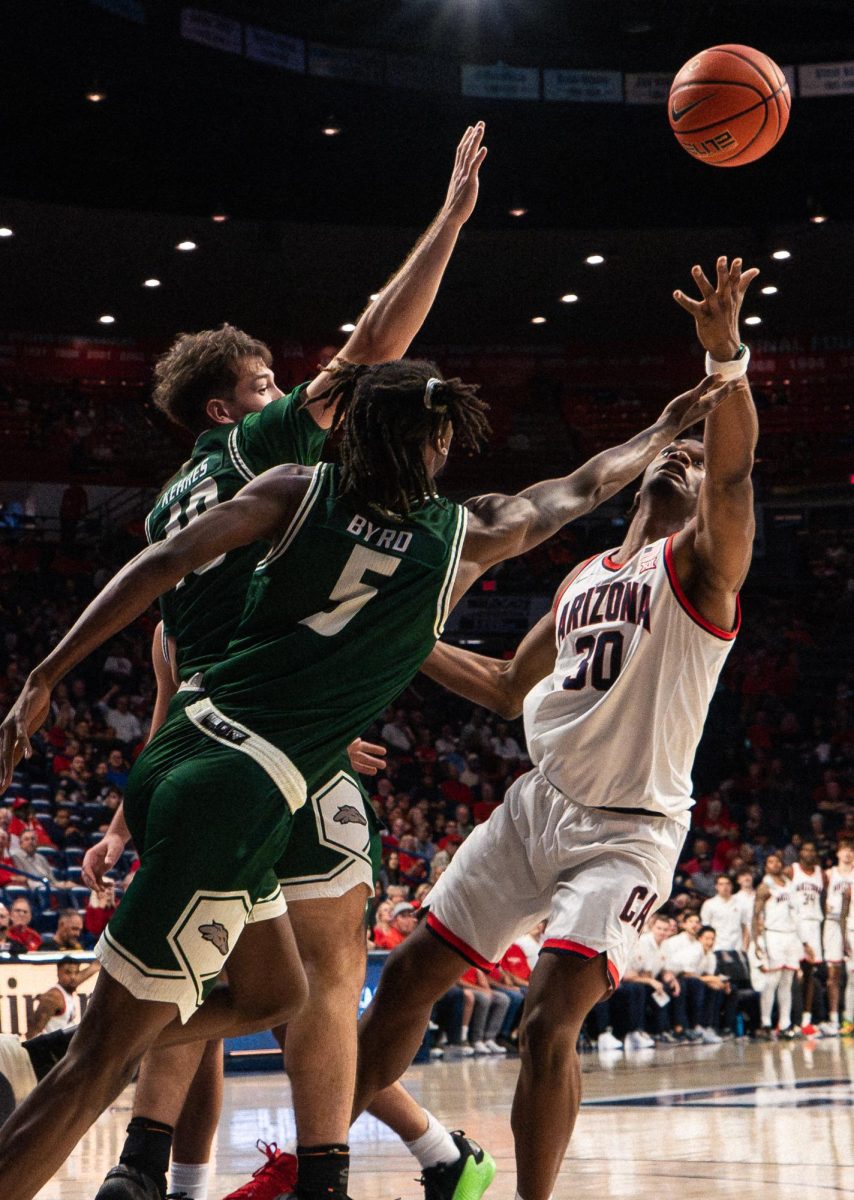UA Basketball
Sean Miller came here to continue traditions.
And now that the Two Million Dollar Man inked a seven-year deal, why would Arizona opt to symbolically destroy the 22 years of history that attracted Miller to Tucson?
About 50 cameras and media members thought they had captured the transition into Arizona basketball’s next era last Thursday. As Miller took questions at his inaugural press conference, the real transition had already begun.
It happened on the floor, where the action always happens.
The east end of McKale Center’s court looked worse than Reggie Theus would’ve looked in front of the microphone.
Construction workers uprooted stacks of wood, leaving McKale’s base exposed. The barren concrete felt coated with a film of dried-up sweat and tears that had seeped through the hardwood, accumulated from players like Jason Terry, Andre Iguodala and Gilbert Arenas.
As Miller, Tucson’s newest poster child, thanked Lute Olson for attending the press conference, the Hall-of-Famer witnessed the destruction of his namesake’s floor.
The construction only paused for the 50-minute on-air period when Miller spoke, but the silence of the drills spoke volumes.
Talk about entering a new era of Arizona basketball.
The direction? A new court that visually erases what McKale Center represented.
Since 1987, the court in Tucson’s main attraction has been adorned by the classic saguaro cactus logo. It separated McKale Center from other boring cookie-cutter floor plans in almost every college basketball arena – an oversized school logo with a small signature of the program’s respective “”founder”” along the sideline.
Beginning next season, the UA will display the school’s block “”A”” at halfcourt and replace the cactus logo with Lute Olson’s signature, saying goodbye to McKale’s classic identity that separates this school’s 25 consecutive NCAA Tournament appearances from every other BCS conference bottom-feeder.
With all the state’s massive cookie-cutter housing developments, from Phoenix to Tucson and every worthless town in between, maybe it’s time McKale Center became just another statistic.
McKale’s old-school cactus logo existed for the same reasons Fenway Park’s Green Monster and Wrigley Field’s ivy do. When the old Boston Garden was destroyed, the Celtics kept the same floor plan: the classic parquet style that still exists today in Boston’s modern arena.
Not that Arizona can compete with Boston’s championship banners in the rafters by any means, but the tradition is relative to this small college basketball town. It’s a fixture. It’s iconic.
Arizona’s big cactus logo represents the desert that evolved into a basketball oasis.
It represents everything Point Guard U stands for in the state’s mountainous landscape and cactus surrounding.
It represents the Steve Kerrs, Sean Elliotts, Damon Stoudamires, Miles Simons, Mike Bibbys, Jason Gardners and Salim Stoudamires.
Watch highlights of those guys. It’s thrilling how many All-Americans have stepped foot on that exact cactus.
And when some 17-year-old AAU phenom walks in the same footsteps as his predecessors, how can he deny the nostalgia?
McKale Center might be an outdated building with oddly-placed yellow seats in the second level, but glamour can’t replace charm.
A jumbotron can’t produce atmosphere.
A fresh coat of paint can’t create tradition.
But it can sure erase it.
– Bryan Roy is a journalism sophomore. He can be reached at sports@wildcat.arizona.edu.



